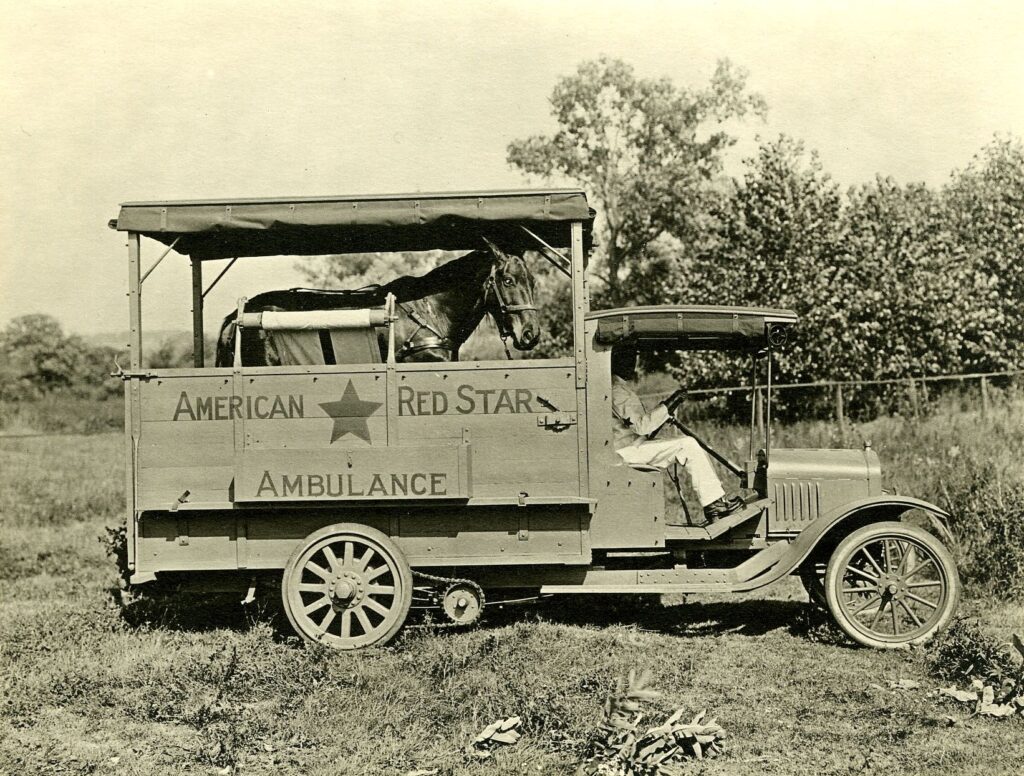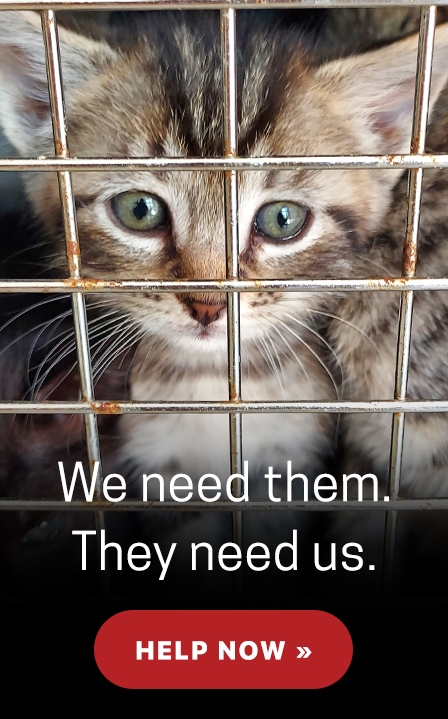In her new book Mission Metamorphosis, American Humane’s president and CEO Dr. Robin Ganzert tells the story of her tenure at American Humane and offers insightful, actionable advice for nonprofit leadership. The following excerpt offers a glimpse at American Humane reclaimed its unique brand.
One hundred years ago, the American Humane brand was clear and com-pelling. We were, among other things, the first responders for America’s animals. American Humane’s historic rescue program was founded in 1916 on the battlefields of World War I, when the US Secretary of War wrote to us and called us to action, enlisting us to save and care for the vitally important warhorses, mules, and donkeys who were being killed and injured in huge numbers in conflicts overseas.
We saw these animals’ roles come to life in the stunning film War Horse, which our good friend Steven Spielberg directed and coproduced. The US Armed Forces used a surprising number of horses and mules during the war to transport supply wagons, ambulances, traveling kitch-ens, water carts, food, engineer equipment, light artillery, and shells. In addition to their transport duties, horses were also used in direct combat. It is estimated that some 10 million horses were killed.
In response to the Secretary of War’s call, American Humane sent volunteers and considerable resources overseas to help—even before US fighting forces arrived. They were sorely needed, and the magnitude of the humanitarian crisis soon became all too apparent. Amid the carnage, our rescue workers toiled to help as many animals as they could, saving and caring for some 68,000 wounded warhorses each month. It was a pivotal and powerful moment for our organization.
Fast-forward 100 years later, and American Humane’s rescue program includes a fleet of emergency response vehicles customized to help ani-mals in disasters, specialized rescue equipment designed specifically for animal search and rescue, and a force of some 200 emergency services volunteers located across the country.
In late 2010, we had just one rescue cache, located at our former head-quarters in the Denver area. The heart of that cache was Lucy, a fullyself-contained 82-foot-long rescue vehicle complete with a mobile emer-gency veterinary hospital that can sleep 16 people. I can tell you from personal experience that she makes a huge impression when she arrives on the scene of a disaster. People have told me that when they see our big rig, they know help has arrived.
Lucy was deployed to New York City immediately after the 9/11 ter-rorist attacks, serving as the veterinary base for first responders and their 300 search and rescue dogs, who were desperately looking for survivors in the rubble. Each night, the search and rescue teams combing through the debris of the damaged and destroyed World Trade Center buildings would bring their animals to Lucy, where a team of veterinarians and other volunteers checked their paws for cuts and glass shards, adminis-tered first aid, and, because of all the toxic substances still burning in the pile, made sure they were thoroughly decontaminated.
Soon after arriving at American Humane, I recognized that we had a crown jewel in Lucy. I also recognized that, with time being of the essence in responding to disasters, it could often take too long for Lucy to reach disaster scenes far from Denver—on the eastern seaboard, in Southern California, or on the Gulf Coast. So, we created a new regional deploy-ment model for rescue that put our first responders within 24 hours of any disaster—natural or otherwise—that might occur across the country. We undertook an immediate planning exercise on how to expand the American Humane Rescue program and how to continue to be the first responders anywhere in the nation.
I’m proud that we can be on the scene anywhere in the continental United States quickly, that’s a significant victory for American Humane. Today, we have a total of five 50-foot regional rescue trucks able to carry rescue workers, lifesaving rescue boats, and veterinary and sheltering sup-plies for up to 100 animals.
On May 20, 2013, a devastating EF5 tornado touched down in Oklahoma, tearing through the city of Moore, about 10 miles south of Oklahoma City, and leaving behind a 14-mile-long path of death and destruction. Twenty-four people were killed by the storm, and 212 morewere injured, not to mention an overwhelming number of animal deaths and injuries.
We brought our big rig Lucy and one of our rescue vehicles into Moore after the tornado tore through the city, setting up a giant shelter for more than 300 cats and dogs at the Oklahoma State Fairgrounds, even as more storms continued to pound the area. In between shifts, our rescue teams grabbed what sleep they could on the trucks, which also serve as sleeping quarters for our volunteers.
When Hurricane Harvey devastated Houston, Texas, in August 2017, we were first to serve. Harvey caused 106 deaths in the United States and an estimated $125 billion in damage, matching Katrina as the costliest hurricane in US history. Across the state of Texas, people abandoned their homes and communities, neighborhoods were destroyed, and dazed pets were separated from their families.
We sent a total of four teams of highly trained and experienced disas-ter relief workers into the fray, along with three of our animal rescue trucks. The first American Humane Rescue team worked in the Houston area, helping shelter frightened, often emaciated animals displaced by the storm. The second rushed to the City of Orange Grove, near Corpus Christi, close to ground zero, where the monster storm made landfall, working with our friends at Chicken Soup for the Soul Pet Food to deliver more than 100,000 pounds of free emergency food to shelters providing relief to animals separated from their families.
The third and fourth American Humane Rescue teams took over the operations of two mega-shelters in Louisiana housing hundreds of ani-mals each, many of them refugees from the storm in Texas. All told, we cared for 1,000 animals left in the wake of Hurricane Harvey.
Our rigs allow us to respond to catastrophes of all kinds across the country. When not responding to disasters, the rigs become mobile health clinics, delivering free veterinary services in remote places where people cannot afford to take their four-legged family members to the vet for checkups or treatment. Our new national staging model allows us to be literally everywhere, every day for animal rescue.
We were first to serve in World War I. We were first to serve after the 9/11 tragedy. We were first to serve in Moore, Oklahoma. We were first to serve in the aftermath of Hurricane Harvey. Accordingly, in 2017, “First to Serve” officially became the new branding tagline for American Humane. By refining our programs and homing in on our unique his-tory and distinctive work, we were able to crystallize our brand, one that appeals to donors and accurately conveys what we do.


